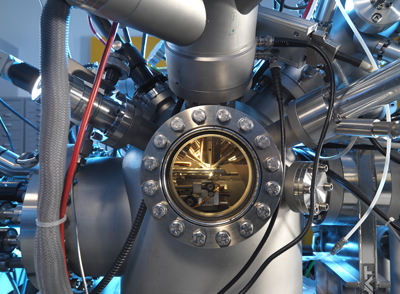Dec 11 2013
The National Physical Laboratory (NPL) has just initiated a project, '3D nanoSIMS - world beating label-free molecular imaging', which could revolutionise medicines research.

Working with major pharmaceutical company GlaxoSmithKline, the project team is designing an instrument which could go beyond the micrometere resolution imaging currently available, by developing a 3D label-free molecular imaging system with nanometric spatial resolution.
Currently, one of the major challenges to the pharmaceutical industry is the measurement of the intracellular drug concentration. This powerful new instrument could help identify where drugs go at the cellular level, even within specific organelles, answering long-standing questions about whether drug concentrations are sufficiently high in the right places to have a therapeutic effect, or if the medicine is lodging within cellular components and causing toxicity. If anomalies were spotted earlier it might help to explain toxicities or lack of efficacy of a medicine and reduce costly late-stage failures.
Sir Colin Dollery, adviser to the GlaxoSmithKline Chairman of Research and Development comments:
"GlaxoSmithKline scientists are looking forward to the opportunities the new equipment will provide to explore in detail the sites of action of novel drug molecules within single cells. Designing drugs that are specific for molecular targets is part of drug development but knowing that they reach their target molecule in the right amount at the right place in the right cells is only just beginning to be attainable in intact cells within tissues. This ability will be a great opportunity."
To meet this challenge, NPL scientists led by Professor Ian Gilmore are working with: ION-TOF, a leading manufacturer of mass spectrometers for imaging; Professors Morgan Alexander, Martyn Davies and Clive Roberts at the University of Nottingham's School of Pharmacy; and Luke Hanley, Professor and Head of Chemistry Department at the University of Illinois at Chicago. ION-TOF will build the revolutionary new instrument which incorporates the powerful Thermo Scientific™ Orbitrap™ mass analyzer for high-performance identification of substances. The project aims to enhance sensitivity by two orders of magnitude and provide label-free molecular imaging in 3D with 50 nm spatial resolution.
As well as enabling new drugs and medicines research, this novel instrument will have important benefits to other fields including, for example, biomaterials, medical devices, regenerative medicine and next generation plastic electronics for displays.
The project will receive over £4.5M of funding from the Strategic Capability Programme of the National Measurement System of the UK Government's Department of Business, Innovation and Skills.
The research at NPL is being carried out by the National Centre of Excellence in Mass Spectrometry Imaging (NiCE-MSI), which focuses on the fundamentals and metrology of key techniques, to boost applications and impact.